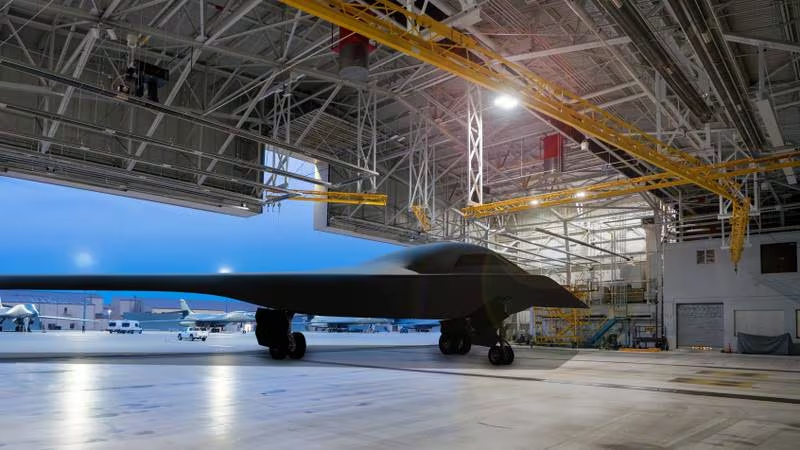
The B-21 Raider, the United States Air Force’s latest advancement in stealth bomber technology, has been the subject of intense speculation and strategic calculation as senior officials weigh the number of units to be procured against the backdrop of rapid technological change and fiscal constraints.

The current commitment stands at 100 aircraft, with a possibility to reassess this number in the mid-2030s.

During testimonies to the Senate Armed Services Committee and the House Armed Services Committee, Air Force Chief of Staff Gen. David W. Allvin and Lt. Gen. Richard G. Moore Jr. respectively outlined the preliminary acquisition plan.

“I think we’re not going to reach that number until probably the mid-2030s and beyond,” Gen. Allvin stated, indicating that future technological advancements might augment the fleet.

The B-21 Raider, which first took flight in November of the previous year, is envisioned to modernize and ultimately replace the aging B-1B Lancer and B-2 Spirit bombers.

“So the commitment right now is to 100 aircraft. That takes us for procurement into the late ’30s,” Lt. Gen. Moore highlighted, adding that the decision to expand the fleet as it would be made at a time when the security environment is not fully foreseeable.

Despite calls from the Global Strike Command and think tanks for a larger fleet of at least 225 advanced long-range bombers to maintain strategic advantage, cost considerations have prompted a cautious approach.

Each B-21 estimated to come with a hefty price tag of around $700 million.

The B-21’s design incorporates an open systems architecture to accommodate future technological capabilities swiftly, a necessary feature to ensure its relevance in a rapidly evolving threat landscape.

Meanwhile, the Raider will not only deliver conventional and nuclear munitions but also operate alongside the venerable B-52 Stratofortress, slated to stay in service into the 2040s.

While the Air Force remains tight-lipped about the production rate during the Low-Rate Initial Production phase, it is clear that achieving the minimum fleet of 100 Raiders by 2039 would require a steady production cadence of six to seven bombers annually.

Northrop Grumman, the aerospace firm awarded the B-21 contract, has been working on the bomber using cutting-edge digital engineering practices and advanced manufacturing techniques.

As the B-21 inches toward operational service, it has also emerged that Northrop Grumman has been contracted to support the B-2 fleet through 2029 with a $7 billion deal, signaling the possible extension of the B-2’s service life should there be delays with the Raider’s rollout.

Air Force Secretary Frank Kendall has indicated that while the B-21 program is on track, he routinely warns that unforeseen problems could arise, which might necessitate keeping the B-2 in service longer than planned.

The Air Force has previously mentioned that the B-2 has the structural integrity to fly into the 2040s if necessary.
Relevant articles:
– The U.S. Air Force May Only Get 100 B-21 Raider Stealth Bombers, The National Interest
– The B-21 Raider Question: How Many Bombers?, nationalinterest.org
– Northrop Gets $7 Billion for B, Air & Space Forces Magazine
– B-21 Raider: The Stealth Bomber the Air Force Needs Right Now, The Heritage Foundation

